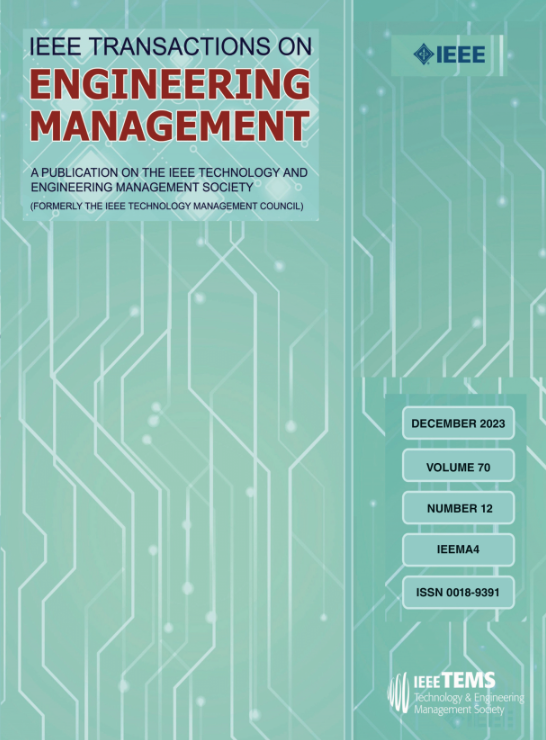峰谷定价下碳税政策对电力供应链低碳技术投资的影响
IF 5.2
3区 管理学
Q1 BUSINESS
引用次数: 0
摘要
本文研究了电力供应链中的低碳技术(LCT)投资策略,采用了一个混合决策框架,考虑了分散和合作的方法。通过整合峰谷定价机制,本文考察了碳税政策(ctp)对LCT投资的影响。分析了发电企业与电力零售企业之间的竞争与合作互动,重点研究了在批发电价折扣策略下,CTP如何影响电力企业的投资决策、电价以及盈利能力。研究结果如下:1)令人惊讶的是,在峰谷定价下,ctp可能并不总是激励LCT投资。当单位碳排放较低时,ctp促进了更大的LCT投资,刺激了峰谷期的电力需求,提高了ER企业的盈利能力。然而,当单位碳排放量较高时,ctp的缺失更有效地推动了LCT投资,增加了电力需求,为ER企业带来了更高的利润。(2)在批发电价折扣策略下,与没有ctp的情况相比,当单位碳排放较低时,ctp导致峰谷期初始批发电价较低,从而增加了ER企业的边际利润。反之,当单位碳排放量较高时,ctp导致两个时期的初始批发电价较高,降低了ER企业的边际利润。(3)在CTP下,单位碳排放量的增加会提高峰谷期零售电价,从而降低电力需求,降低LCT投资,降低电力企业的盈利能力。此外,发电单位成本的增加提高了高峰和低谷期的零售电价,进一步加剧了需求、投资和利润的下降。本文章由计算机程序翻译,如有差异,请以英文原文为准。
Impacts of Carbon Tax Policies on Low-Carbon Technology Investment in the Electricity Supply Chain Under Peak–Valley Pricing
This article investigates low-carbon technology (LCT) investment strategies within the electricity supply chain, employing a hybrid decision-making framework that considers both decentralized and cooperative approaches. By integrating a peak–valley pricing mechanism, the article examines the impact of carbon tax policies (CTPs) on LCT investment. It analyzes the competitive and cooperative interactions between power generation and electricity retail (ER) enterprises, focusing on how the CTP influences investment decisions, electricity pricing, and the profitability of the electricity enterprise under a wholesale electricity pricing discount strategy. The findings are as follows: 1) Surprisingly, CTPs may not always incentivize LCT investment under peak–valley pricing. When unit carbon emissions are low, CTPs promote greater LCT investment, stimulate electricity demand during peak and valley periods, and enhance the profitability of the ER enterprise. However, when unit carbon emissions are high, the absence of CTPs more effectively drives LCT investment, increases electricity demand, and yields higher profits for the ER enterprise. 2) Under a wholesale electricity pricing discount strategy, compared to the case without CTPs, when unit carbon emissions are low, CTPs lead to lower initial wholesale electricity prices during peak and valley periods, thereby increasing marginal profits for the ER enterprise. Conversely, when unit carbon emissions are high, CTPs lead to higher initial wholesale electricity prices in both periods, reducing the ER enterprise’s marginal profits. 3) Under a CTP, higher unit carbon emissions increase retail electricity prices during peak and valley periods, which reduces electricity demand, LCT investment, and the profitability of electricity enterprises. Furthermore, an increase in the unit cost of electricity generation raises retail electricity prices during peak and valley periods, further exacerbating declines in demand, investment, and profits.
求助全文
通过发布文献求助,成功后即可免费获取论文全文。
去求助
来源期刊

IEEE Transactions on Engineering Management
管理科学-工程:工业
CiteScore
10.30
自引率
19.00%
发文量
604
审稿时长
5.3 months
期刊介绍:
Management of technical functions such as research, development, and engineering in industry, government, university, and other settings. Emphasis is on studies carried on within an organization to help in decision making or policy formation for RD&E.
 求助内容:
求助内容: 应助结果提醒方式:
应助结果提醒方式:


